Toll Free USA: 1877-209-7243
Toll Free USA: 1877-209-7243
The Galapagos Islands are a haven of extraordinary species that have shaped the study of natural science while remaining basically untouched by human interference. Here you will find essential information about the Galapagos, including its history, geography, and climate. Discover a living paradise where nature’s wonders thrive in harmony.
Galapagos is a group of volcanic islands in the Eastern Pacific. The archipelago is a province of the Republic of Ecuador and due to their location the only way to reach the Islands is by air. The distance from Ecuador to Galapagos is approximately 1,000 km (600 miles).
Galapagos consists of 127 islands, islets, and rocks, a number that continuously evolves due to volcanic activity, which creates new lava fields, islets, and even expands existing islands. In this map of Ecuador and Galapagos islands you will be able to see the isolated location of the archipelago.
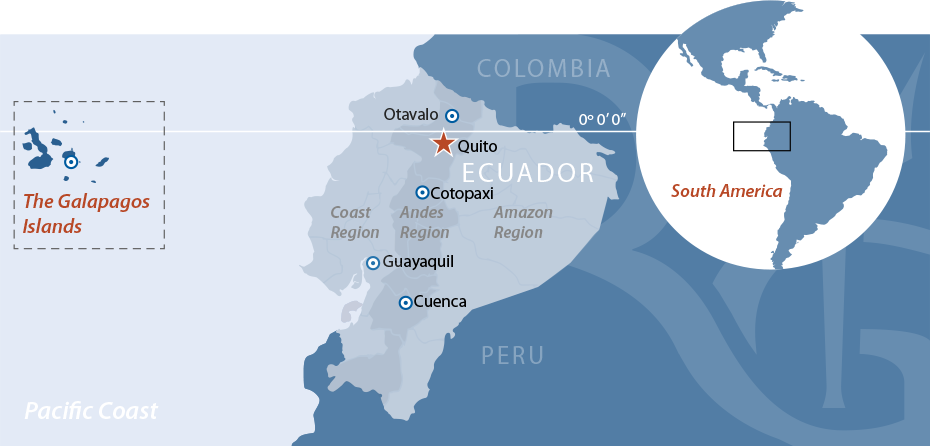
The archipelago covers approximately 7,880km² (3,040mi²) of land and is spread across 45,000km² (17,000mi²) of ocean.
The main islands of Galapagos are: Baltra, North Seymour, Española, Fernandina, Floreana, Genovesa, Isabela, Pinta, Rabida, San Cristobal, Santa Cruz, Marchena, Santa Fe, Bartholomew, Plazas, Santiago, Darwin and Wolf.
The Galapagos Islands remain largely untouched by human presence. Most islands can only be explored with a certified naturalist guide on tours approved by the Galapagos National Park. Here are just a few of the remarkable attractions that each major island has to offer.
Click on each of the red dots of an island to view and learn about its Visitor Sites. These are all the park approved spots you may visit on land.
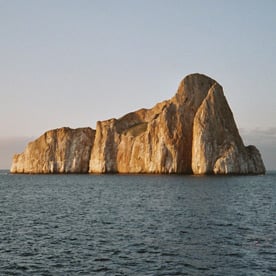
San Cristóbal boasts a blend of history, nature, and breathtaking landscapes. Its key attractions include Junco Lagoon and nesting sites for blue-footed, Nazca, and red-footed boobies, along with great frigatebirds and large sea lion colonies.
Tortoise Breeding Center | Lobos Island | Witch Hill | Kicker Rock | Interpretation Center | El Junco
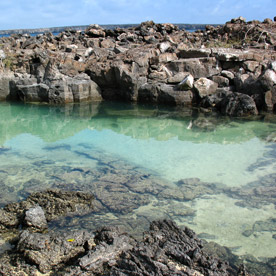
Known as “Bird Island,” Genovesa offers incredible seabird diversity within the stunning Darwin Bay. Expect to see red-footed boobies, swallow-tailed gulls, Nazca boobies, and red-billed tropicbirds amid tide pools and lush cliffs.
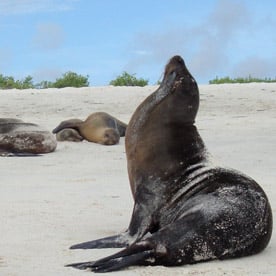
This southeastern gem is home to the iconic waved albatross, marine iguanas, and mockingbirds. Thorny vegetation and dramatic cliffs create a unique environment where wildlife thrives.
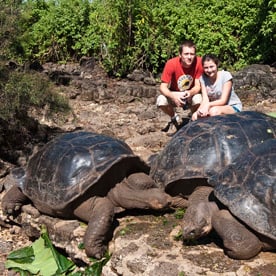
The central hub of the Galapagos, Santa Cruz features Puerto Ayora, the largest town in the archipelago. Visitors can explore diverse vegetation zones and spot giant tortoises, marine and land iguanas, finches, sea lions and frigatebirds.
Charles Darwin Station | Highlands | Bachas Beach | Black Turtle Cove | Dragon Hill | Eden Islet | Twin Craters | Borrero Bay
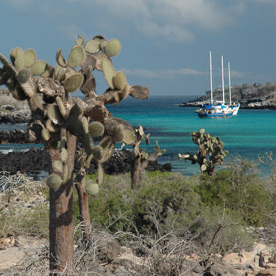
Known for its exclusive Santa Fe iguana and towering cacti, this island’s turquoise bay offers idyllic views of sea lions basking on the shore. It’s a tranquil haven for visitors seeking serenity and natural beauty.
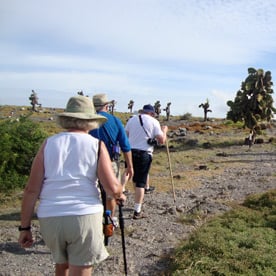
A small island with vibrant contrasts: red Sesuvium plants, golden land iguanas, and steep cliffs teeming with seabirds. A bachelor colony of sea lions completes this colorful site.
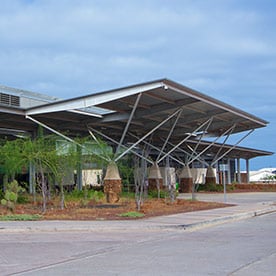
Often the starting point for many Galapagos adventures, Baltra is home to a major airport. Despite its small size, the island shelters land iguanas and Galapagos finches in its arid landscape.
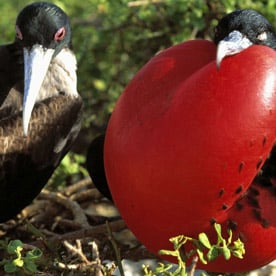
A birdwatcher’s dream, this flat island features colonies of blue-footed boobies, magnificent frigatebirds, and land iguanas. Its coastal waters host playful sea lions and snorkeling opportunities with rays and reef sharks.
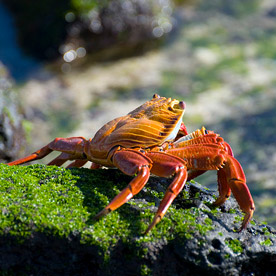
A narrow coral reef between Baltra and North Seymour, Mosquera offers one of the archipelago 's largest sea lion colonies and occasional sightings of orcas hunting in the waters.
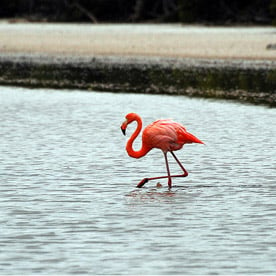
Steeped in mystery and history, Floreana is a must-visit for snorkeling enthusiasts. Visitors can marvel at flamingos in its lagoons and swim alongside sea turtles in pristine waters.
Post Office Bay | Cormorant Bay | Baroness Viewpoint | Devil's Crown | Champion Islet
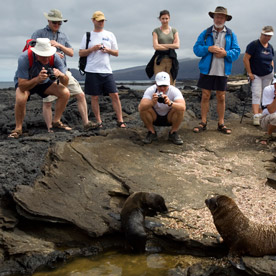
Once a pirate haven, Santiago’s rugged landscape boasts lava formations and nesting sites for marine birds. The island’s highlights include fur seals, sea lions, and the occasional sighting of Galapagos hawks.
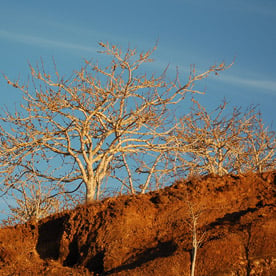
Renowned for its striking red sand beach, Rabida dazzles with its scenic beauty and rich birdlife, including flamingos, pelicans, sea lions and nine varieties of finches. Its clear waters are perfect for snorkeling.
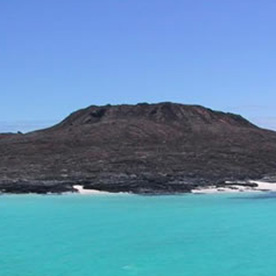
A tiny yet picturesque island with a unique cone shape, Chinese Hat is home to sea lions, Sally Lightfoot crabs, marine iguanas, and lava lizards. The scenic trails lead to dramatic views and volcanic formations.
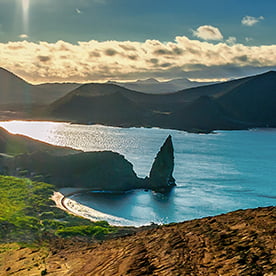
Famous for Pinnacle Rock, Bartholomew offers moon-like landscapes and snorkeling with reef sharks, rays, and colorful fish. On land, visitors can spot lava cactus, sea lions and sometimes penguin sightings are a possibility.
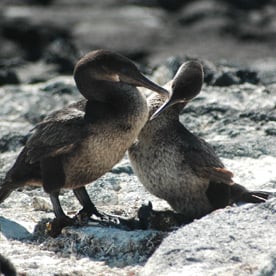
The youngest and most pristine island in the archipelago, Fernandina features black lava fields and lush mangroves. Visitors can see flightless cormorants, marine iguanas, Galapagos penguins, racer snakes and sea lions.
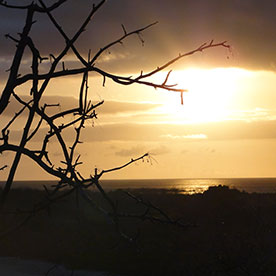
The largest island, formed by five fused volcanoes, Isabela offers diverse landscapes from lava fields to lush highlands. It is home to giant tortoises, flightless cormorants, penguins, and vibrant marine life.
Tortoise Breeding Center | Wetlands | Las Tintoreras | Wall of Tears | Sierra Negra Volcano | Moreno Point | Elizabeth Bay | Urbina Bay | Tagus Cove | Vicente Roca Point
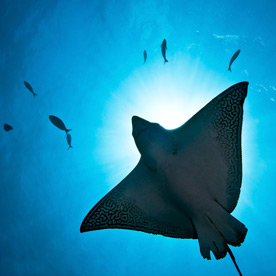
Renowned as premier diving sites, these remote islands teem with marine giants like whale sharks, hammerheads, dolphins, and tiger sharks. Accessible only to advanced divers, these waters promise unforgettable underwater encounters.
Shaped by volcanic activity atop the Nazca tectonic plate's hot spot, the Galapagos Archipelago is a dynamic and ever-changing landscape. Geologically young, the islands are estimated to be no more than 5 million years old, with the westernmost islands still forming—some only a few hundred thousand years old.
The eastern islands are older, having drifted further from the volcanic hot spot, while the younger western islands remain geologically active and continue to grow. This age difference creates contrasting landscapes and habitats, offering unique wildlife and striking scenery in each region.
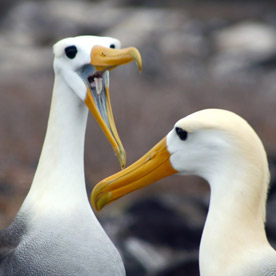
The eastern islands are characterized by towering cacti and white sandy beaches. Wildlife highlights include the Waved Albatross, Red-footed Boobies and large land iguana colonies.
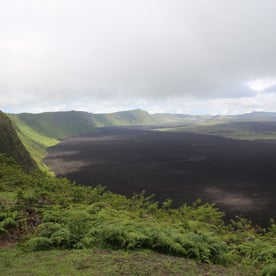
The western islands, particularly Isabela and Fernandina, showcase rugged volcanic terrain with dramatic cliffs, towering volcanoes, and vast lava fields. Unique wildlife includes the Flightless Cormorant and the Galapagos Hawk.
Our carefully curated Galapagos cruise itineraries allow our guests to experience the beauty and diversity of both the eastern and western islands depending on the vessel and length of the program. Let our expert destination specialists guide you in selecting the perfect route tailored to your interests and needs.
With each Galapagos cruise booked, you are contributing: